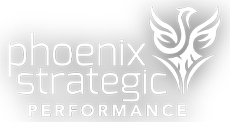As you prepare for a robust performance review discussion with your employee, you will likely encounter at least one of the following situations:
- That's not my job
The employee who should be doing more tasks but has conveniently reshaped their job to include the functions they enjoy doing and eliminate the functions they don't like or don't know how to do.
- It takes two people to do one person's job.
The employee who has the knowledge and skills to perform the tasks and responsibilities of the full job description but doesn't have the confidence to do those tasks and responsibilities at 100%, on their own, without constant reinforcement from the manager or other employees.
- The helicopter manager syndrome
The employee who can perform their tasks and responsibilities when the manager hovers over them, but the minute the manager stops hovering, the caliber of the work slips again. This employee can do the job but either can't or won't sustain peak performance independently.
What do all these employees have in common? They are all busy doing work, but when measured against the job description benchmark, they all fall short of ideal performance.
In a recent meeting with managers, we were discussing the elements of conducting a successful performance review meeting, and the following questions came up:
- How do we hold an employee accountable for increased performance?
- What if the employee thinks they are doing a great job and doesn't agree with us?
- How do we keep the conversation from going around in circles and not achieving consensus or agreement on performance standards?
The discussion focused on the frustration of getting an employee to think about the job and not about how busy they were. After a spirited conversation on the topic, the light bulb went on! The group recognized that the frustrations the managers felt could be eliminated when they referred to the job description as the logic stake to ground the discussion around:
- The full roles and responsibilities of the job
This is why employees must both know what their job descriptions describe and sign off on them. Without a sign-off, you will go around 'busyness circles' and never come in for a landing. - Agreement to a mutual understanding of the job and high-performance expectations
Using the job description stops frustration dead in its tracks. Get agreement, and the rest of the conversation revolves around problem-solving, development plans, and goal setting. - Getting Commitment to Act and Taking Accountability
To avoid any accountability crisis, as a manager, you must actively and obviously move the 'accountability monkey' off the manager's shoulders and pass it to the employee's shoulders. The magical word in any performance review or coaching conversation that will accomplish this is "YES." Only the "YES" word will make that happen. The following are not "yes" words:
- I'll try
- Sure
- Leave it with me
- No problem
- I'll see what I can do, etc.
Growth, Change, Job Descriptions, and Future Performance Reviews
Review your current job descriptions to ensure the evolving tasks and responsibilities are included if the job has evolved. If your organization is in growth mode or experiencing significant change, job descriptions can become obsolete in 2-3 months, and you risk that you and your employee are out-of-synch regarding evolving expectations.
The Power of the Job Description and the Performance Review Process
Well-written, robust job descriptions are fundamental to anchoring a high-performance culture into an organization. The job description should have substance and not hide in a drawer or file to become unusable and/or obsolete. The job description should be an organic and dynamic tool the organization uses throughout the year. Why should we spend time writing and reviewing them? Because they:
- Help organizations manage performance expectations.
- Keep employee work and organizational goals aligned
- Should be used as part of the new hire interview process
- Should be used as part of the performance review, development planning, and coaching process
If appropriately used as a valuable organizational and management tool, the simple job description will pay dividends repeatedly!
We invite you to download our presentation: "Strategic Role of the Simple Job Description," to see how robust job descriptions can optimize your organization's process, products, and people.





